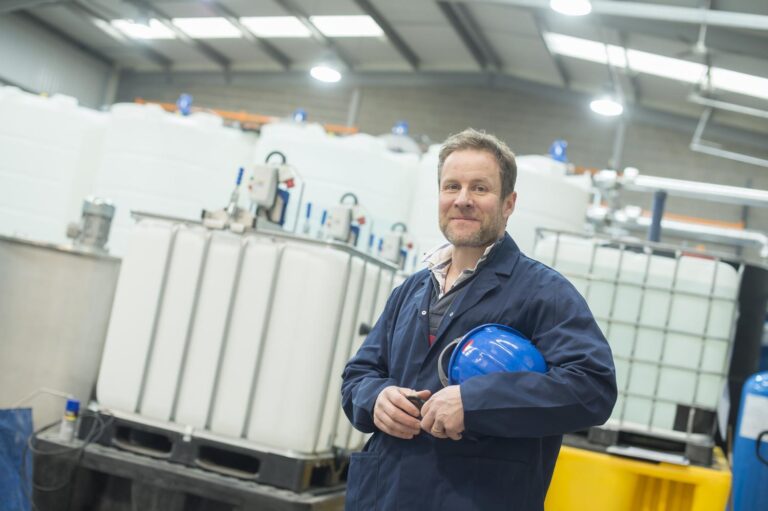The arduous process of manufacturing microscopic slivers of silver used to make artificial hairs yields only tiny batches. But new manufacturing techniques could drive the cost of such materials down dramatically.Instead of making expensive small portions of such unusual substances, Professor Ed Lester at the University of Nottingham, UK, has created a method that can continuously produce nanoparticles in water using a process known as hydrothermal synthesis.In the EU-funded SHYMAN project, researchers created a full-scale reactor capable of producing over 1 000 tonnes of nanoparticles a year.‘The operating costs are sufficiently low that (the new technique) has really changed the nature of the game, because the economics improve with scale,’ Prof. Lester explained. At that scale, they can produce some materials at around a few euros a kilo.Artificial boneThat could mean cheaper nanomaterials for a variety of industries, making everything from scratch-resistant coatings for boats, to flame-retardant car plastics, and even artificial bone.‘Particularly for artificial bone, the real challenge was could we make something that was medical grade … was it clean enough, was it pure enough, was it free of all contaminants that are naturally present in regular water supplies,’ Prof. Lester said.The reactor produces nanoparticles by mixing metal salts instantaneously in superheated water. Image courtesy Prof. Ed LesterNanomaterials are critical for products that need to be 3D printed, since they are jetted out of a tiny nozzle. For instance, an ink of copper nanoparticles can be used to print conductive tracks for flexible electronics.“‘The development of such materials is very challenging, but will in principle allow the construction of electronic circuits and data storage units the size of which will be that of individual atoms and molecules.’Dr Stijn Mertens, Katholieke Universiteit Leuven, Belgium‘If we really want transparent or flexible telephones or display screens … the only way to make those products is to use nanomaterials,’ said Prof. Lester.Traditional techniques of manufacturing nanoparticles generate dry powders. Dry powders can be potentially dangerous to handle because of the risk of inhalation, and they are more difficult to formulate for most end-uses.‘It’s like lumpy gravy. You have to work hard to re-disperse powders back into a liquid. Gravy powder is hard, but nanoparticles are worse,’ Prof. Lester said.Prof. Lester’s hydrothermal synthesis works instead by mixing metal salts instantaneously in superheated water. The particles form over seconds, and can then be cooled down and collected.To create a reactor that could mix continuously but without blocking, the researchers at Nottingham modelled the reaction using sugar water and methanol flowing through a plastic pipe.That knowledge led to them creating a steel-piped reactor made using a pipe within a pipe, where the metal salts could mix without getting blocked.By using water instead of other harmful chemicals, the technique is also more environmentally friendly, and nanomaterials have an element of better sustainability. Many products use micron-materials, but nanomaterials are a thousand times smaller.‘Nanomaterials are going to be in far more products in the future,’ Prof. Lester said. ‘As we get better at manufacturing these materials we’ll use less and less resources to make each individual product, and that’s got to be a good thing.’Unusual propertiesWhen the dimensions of a material are made sufficiently small, special properties often emerge. Dr Stijn Mertens from the Technical University of Vienna, Austria, studied a so-called boron nitride nanomesh as part of the TEMPLATES project carried out at Katholieke Universiteit Leuven in Belgium to look at this.The nanomesh consists of hexagonal boron nitride, a single layer of boron and nitrogen atoms forming hexagons, like carbon in graphene. A layer of the rare platinum-like metal rhodium causes the material to buckle and create pores, like corrugated cardboard.That nanomesh can trap individual molecules, with each pore of the nanomesh being only 2 billionths of a metre wide.‘If you imagine a carton that has to transport eggs, it’s sort of like this nanomesh. If you drop in little straws they will be trapped in every pocket,’ Dr Mertens explained. ‘It behaves like a very large array of molecular-sized test tubes, and allows studying the behaviour in each test tube separately.’The ability to look at each individual molecule can help to develop future technologies such as molecular electronics, where silicon chips could be replaced by molecules that perform logic operations.‘Once the difficulties of addressing individual molecules are solved, I believe that self-assembled molecular electronics may become a reality,’ said Dr Mertens.‘The development of such materials is very challenging, but will in principle allow the construction of electronic circuits and data storage units the size of which will be that of individual atoms and molecules.’If you liked this article, please consider sharing it on social media.
This article was originally published in Horizon, the EU Research and Innovation magazine.
Add to favorites:
Share:
Listing Description
Video
Documents
No documents available.
Ask KETMarket to make a contact
Connect with the Listing Owner!
💬 Please log in now to askKETMarket to make a contact. Not a member yet? Sign up for free and start connecting today!
Video
Related Funding and Finance Opportunities
Unlock Exclusive Funding Opportunities!
🔑 Get instant access to tailored funding opportunities that perfectly match your needs. This powerful feature is exclusively available to our premium members—helping you save time, stay ahead of the competition, and secure the right funding faster.
Upgrade to Premium now and never miss an important opportunity again! Already a premium member? Log in here to explore your matches.
Related Innovation Offers
Discover Tailored Innovation Offers!
🚀 Gain access to technology solutions that match your specific needs and interests—carefully selected to support your innovation goals. These offers are exclusively available to our premium members, helping you identify relevant technologies faster and start the right conversations with potential partners.
Upgrade to Premium now and explore your personalized technology matches today! Already a premium member? Log in here to view your tailored offers.
Related Knowledgeable Resources
Discover More with Premium: Related Knowledge Resources
🔒 You’re missing out on expert-curated knowledge specifically matched to this topic. As a Premium member, you gain exclusive access to in-depth articles, guides, and insights that help you make smarter decisions, faster.
Whether you’re preparing a funding proposal, researching a new market, or just need reliable information—our Premium knowledge matches save you hours of research and point you directly to what matters.
Upgrade to Premium now and instantly unlock relevant knowledge tailored to your needs! Already a member? Log in here to view your personalized content.

